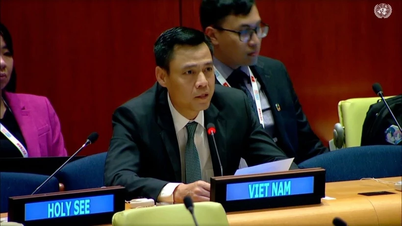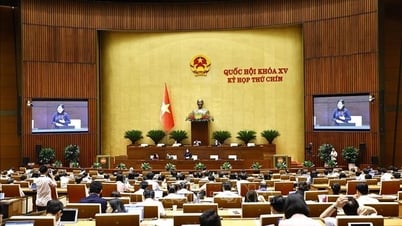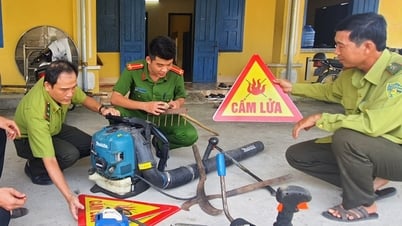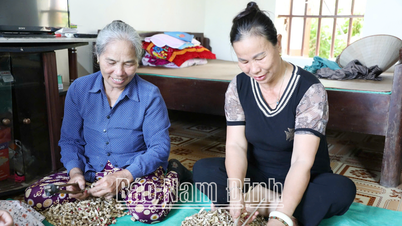In Vietnam, there are currently more than 15 million smokers. Tobacco use is causing a burden of disease and premature death with an estimated number of more than 100,000 deaths each year. In Quang Tri , the overall smoking rate is 20%, the rate of male smokers is 36.7% and female smokers is 3.3%. The rates of past and current use of e-cigarettes in this survey were 1.5% and 0.5%, respectively. The rate of people aged 15 and over exposed to secondhand smoke at home is 51%.
According to research by the World Health Organization, cigarettes contain more than 7,000 chemicals, of which at least 70 are carcinogenic. Smoking causes serious damage to health, which can lead to diseases such as lung cancer, oral cancer, nasopharyngeal cancer, cardiovascular disease, and especially lung diseases such as emphysema and chronic bronchitis.
In addition, smoking also has a negative impact on the living environment of the community. Non-smokers will have to endure cigarette smoke in the air, which is uncomfortable and affects their health. Smoking also increases the risk of respiratory and cardiovascular diseases for non-smokers who live in a smoky environment.
In addition to the health damage, financial costs also account for a significant part of the lives of smokers. On the other hand, diseases caused by smoking will reduce the ability to work, which means reducing income, thereby not only the smoker but also their family will have to bear the financial consequences. From a social perspective, smoking is also one of the causes of increased medical costs. Tobacco-related diseases are a burden on public health systems, causing medical resources to be wasted on treating preventable diseases.
Given the serious harms of tobacco, the World Health Organization (WHO) has chosen May 31 every year as the International No Tobacco Day, with the aim of creating and encouraging a 24-hour period of no tobacco smoke globally. In 2025, the theme of World No Tobacco Day chosen by the World Health Organization is “Exposing the false allure” - with the aim of exposing the tactics of tobacco corporations around the world in false advertising, misleading people into thinking that tobacco is a harmless product to attract users, especially young people.
Organizing activities in response to World No Tobacco Day May 31, National No Tobacco Week May 25 - 31, 2025, and at the same time strengthening the implementation of the Law on Prevention and Control of Tobacco Harms, on May 8, 2025, the People's Committee of Quang Tri province issued a document requesting provincial departments, branches, sectors, mass organizations, People's Committees of districts, towns and cities to direct the development of plans and organize the implementation of the National Strategy on Prevention and Control of Tobacco Harms by 2030.
In particular, focusing on including the target of reducing the rate of tobacco users in the local socio-economic development targets in each period; organizing activities in response to World No Tobacco Day and National No Tobacco Week through practical activities; regularly inspecting and checking compliance with smoking ban regulations at medical facilities, educational institutions, workplaces, hotels, restaurants and other places where smoking is prohibited.
Inspect, examine and strictly handle violations of regulations prohibiting the production, trading, import, harboring, transporting and using of e-cigarettes and heated tobacco products; strengthen information, education and communication on preventing the harmful effects of tobacco and prohibiting the production, trading, import, harboring, transporting and using of e-cigarettes and heated tobacco products; integrate activities to prevent the harmful effects of tobacco into the movements "All people unite to build new rural areas and civilized urban areas"; the movement "All people unite to build a cultural life".
In the above-mentioned directives of the Provincial People's Committee, there is a requirement to "include the target of reducing the rate of tobacco users in the local socio-economic development targets for each period". To implement this content, it is necessary to quantify the number of smokers over each time period to calculate the reduction rate. This is very difficult to do because it is almost impossible to count the number of smokers in society in each locality, because smokers belong to all groups and components.
However, it is possible to grasp that the smokers are those who are working in the political system and enterprises. Observations show that a large number of cadres, civil servants, public employees, and workers smoke. Therefore, in our opinion, we should first specify the target of reducing the rate of tobacco users in agencies, units, and enterprises. When the subjects are cadres, party members, civil servants, public employees, and workers who smoke significantly less, moving towards non-smoking, it will have an impact and spread non-smoking in society.
It can be affirmed that, because smoking is not an essential need, mandatory to maintain life, but mainly due to habit and "spread" from one person to another. Therefore, smoking shows a very clear "movement" character, and when it is no longer a movement, many other subjects in society will automatically not smoke.
Dinh Dung
Source: https://baoquangtri.vn/lam-sao-de-dua-so-luong-nguoi-hut-thuoc-la-giam-vao-chi-tieu-phat-trien-kt-xh-193669.htm




![[Photo] Determining the pairs in the team semi-finals of the National Table Tennis Championship of Nhan Dan Newspaper](https://vphoto.vietnam.vn/thumb/1200x675/vietnam/resource/IMAGE/2025/5/21/eacbf7ae6a59497e9ae5da8e63d227bf)

![[Photo] Prime Minister Pham Minh Chinh attends the groundbreaking ceremony of Trump International Hung Yen Project](https://vphoto.vietnam.vn/thumb/1200x675/vietnam/resource/IMAGE/2025/5/21/ca84b87a74da4cddb2992a86966284cf)




























































































Comment (0)